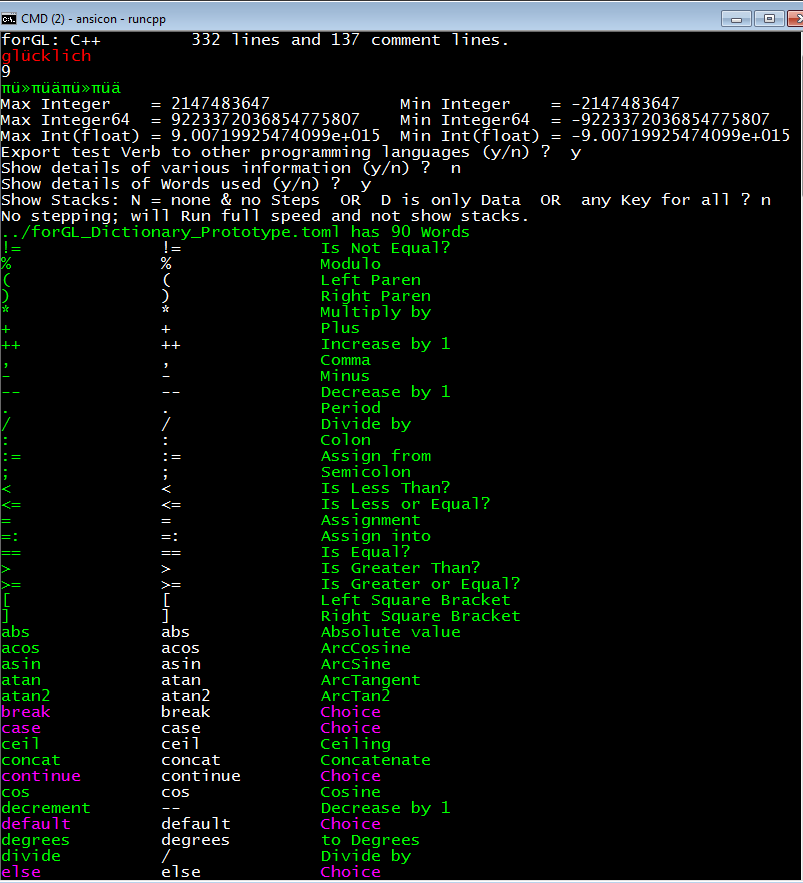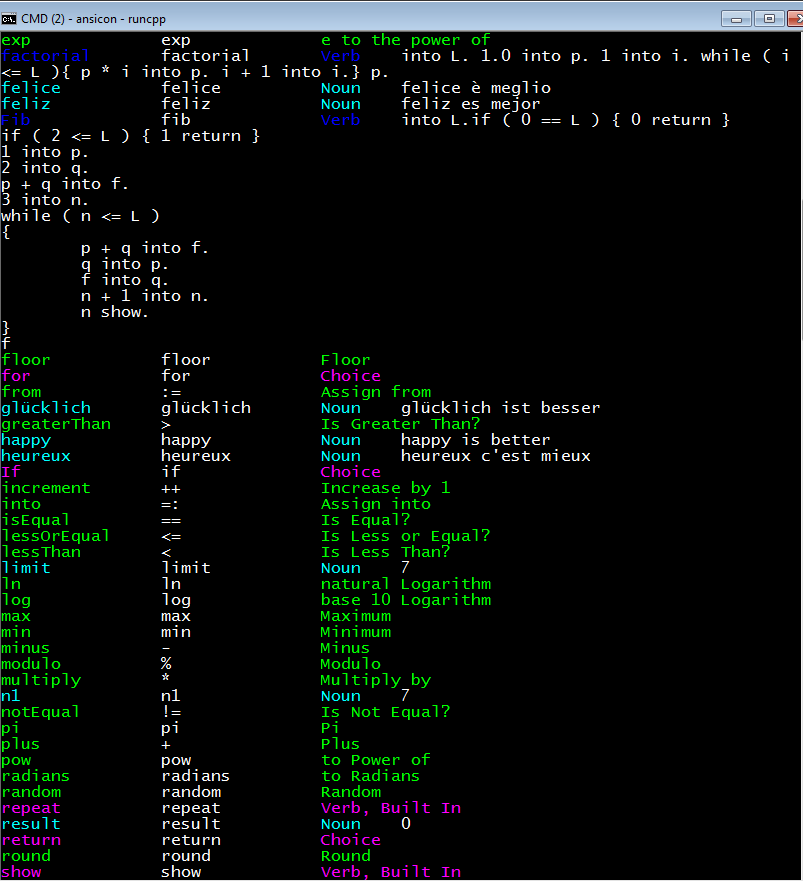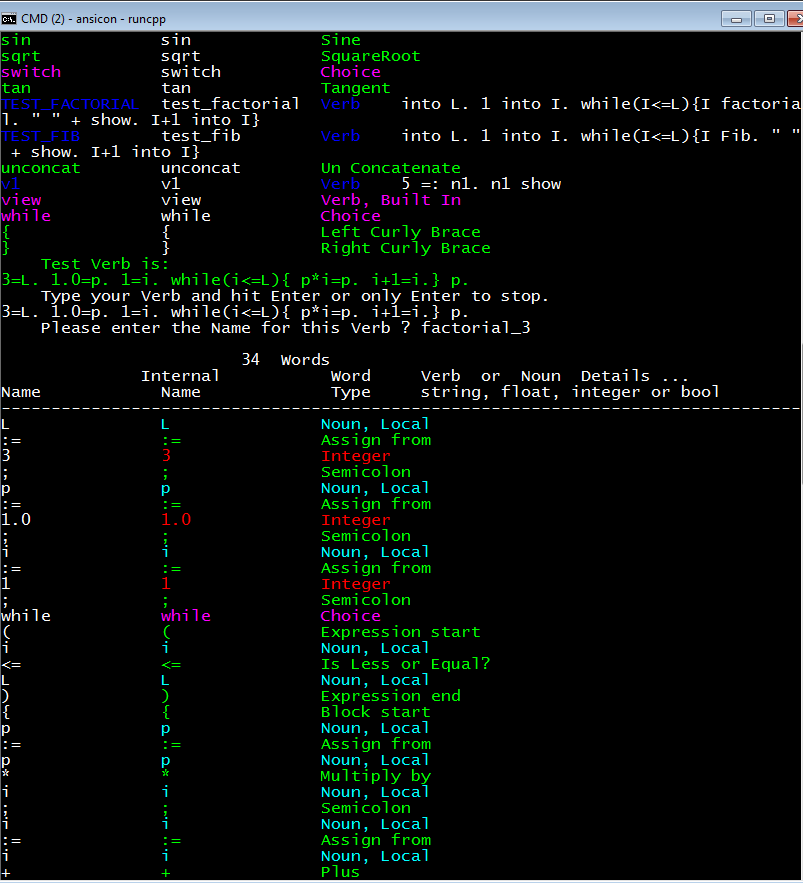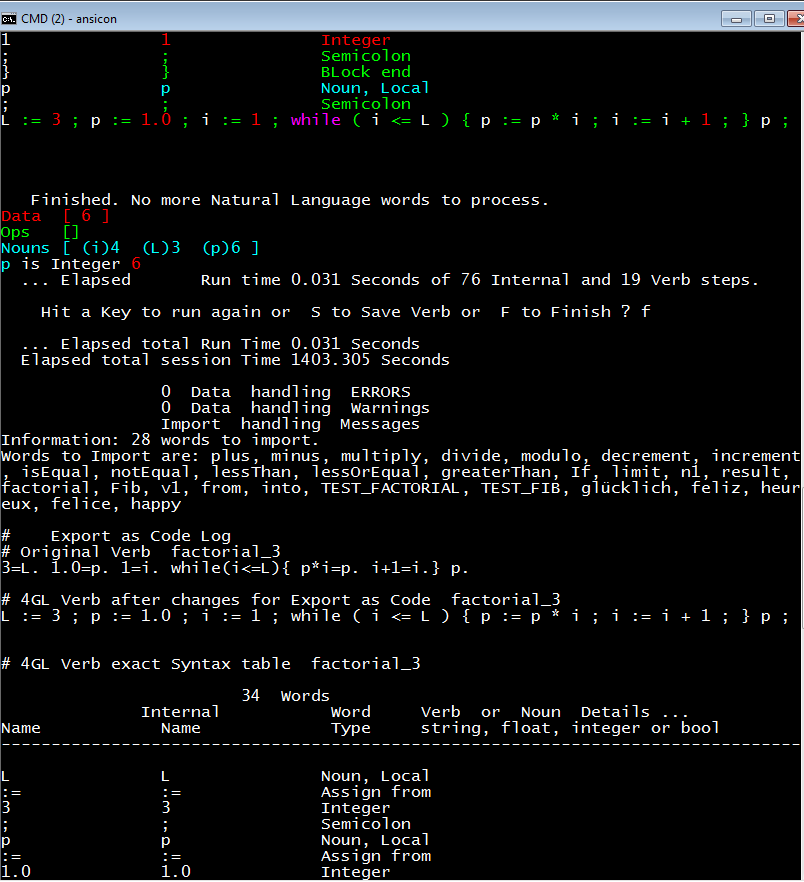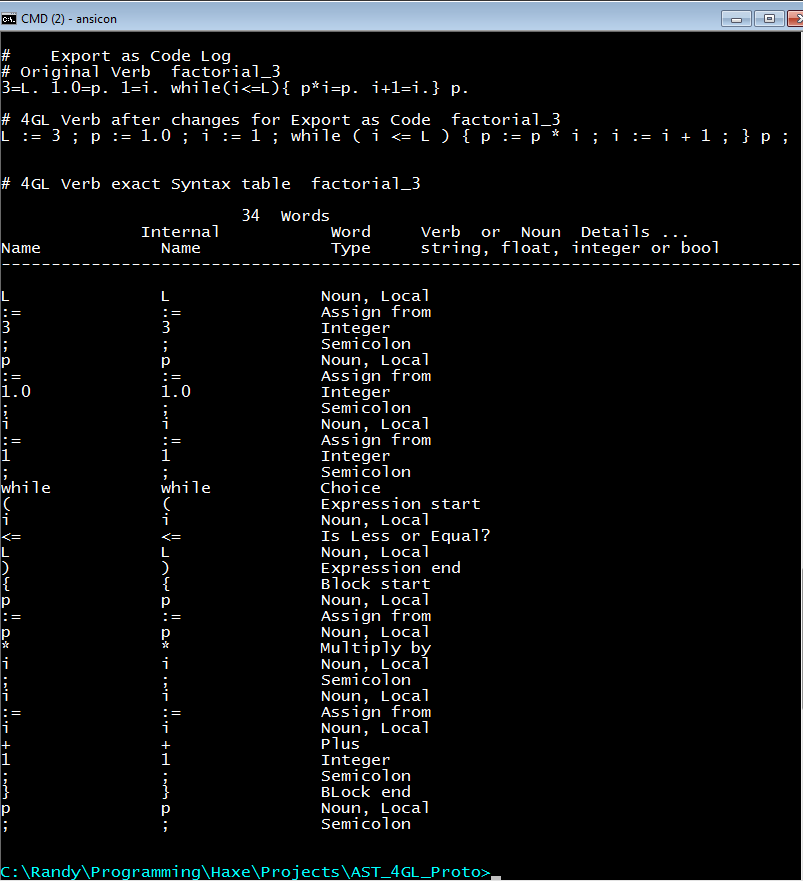forGL repository is available.
Archive includes info needed to be dangerous with forGL…
Sources, Docs, Build info, example Dictionaries, Haxe US Presentation, more sources, OH My !
Presentation Outline @ Haxe 2019 US in May
I have been approved to present the forGL application in May at Seattle.
Expected duration is close to 1 hour with
Demonstration, Background, answer Questions, then repeat until time runs out.
Thanks to the Haxe Foundation, HaxeTeam and Haxe Forum Members I have made enough of (a nuisance … er) progress to be dangerous with a presentation.
Acknowledgements:
Gerard W. Horgan, Willem van Rijk and others that helped create / sell Amber language / IDE, Amber Software (USA, Netherlands and Deutschland), Cyware – companies not in business now (found on Wayback site).
forGL application (open source, MIT) is to help people to do computer programming that do not have previous experience either with programming or understand English.
If you can type in your own language and know how to use a Calculator program then you can start using forGL. Intended platforms are
phones, smart phones, tablets, laptops, desktops, servers, etc.
forGL repository on GitHub. I aim to publish working code by end of April 2019.
Presentation Details
forGL Demonstration examples
Options that User / Programmer can choose by command line (TODO) or interactively
Run automated Tests in one window while Editing / Running / Debugging in another TODO
Showing Dictionary contents
Editing Words (Nouns, Verbs, alias to any Operator) in a Dictionary
Verb shown after Parsing / Resolving
Verb running manually: output of Show command, Data, Operator and Noun stacks
Verb running Automatically. Options about Speed and stack Details shown
Exporting a Verb to Haxe with comments as given in User’s language
forGL Background Ideas
simplified Natural Language(s), not doing Natural Language Processing here
Nearly any syntax style will work (infix, prefix, postfix). You can also mix different Words from different languages in the same Verb. You can define words in languages from Games, Movies, Books, Stories, Myths, Legends, etc. and then program with them.
Dictionary analogy only about 100 Word definitions needed to start to be productive
European languages supported now (proof of concept) i18n is a TODO.
forGL Questions & Answers
Up to you…
5 Screen Shots Text mode in Windows (GUI TODO), please read top to bottom
Summary
Many details and features to add to forGL have been posted here in Haxe Community.
Creating and using forGL has given me new perspectives about what computer programming means and perhaps more interesting about how people learn programming as a way to solve problems.
Have Fun!
